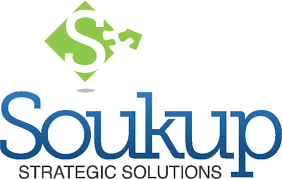Sheryl Soukup, CFRE, is the founder and President of Soukup Strategic Solutions, a full-service consulting company helping nonprofits maximize their impact in fundraising, marketing, strategic planning, and governance.
Board retreats create an electric kind of energy for me. Whether I’m participating as a board member or facilitating a retreat for others, I’m lit up with anticipation as I get ready to attend a retreat. Why are they so exhilarating for me? Because I have seen, many times over, what they can do for an organization and its leaders. When done right, board retreats result in outcomes that have the power to transform an organization and make dreams come true. What do I mean? Well, a board retreat, when well planned and executed, can and should result in the following:
Shared Vision
During the retreat, the board and other key leaders work together to articulate a shared vision for the future of the organization. This is done by allowing the retreat participants time to share their dreams and big-picture ideas. Everyone should contribute, and all ideas are welcome! As each member of the group adds detail, a picture begins to emerge of what they collectively see in their mind’s eye.
As the picture begins to take shape, some ideas are incorporated, and others are omitted or revised until the board agrees by consensus with the vision as described. This shared vision should be compared to the existing mission and vision statements to ensure alignment and prevent mission creep. Next, the board will articulate what the organization needs to look like three years from now if their shared vision for the future will eventually be achieved.
A shared vision is critical if you are going to inspire the board to do the hard work necessary to transform their organization. Let’s face it, as board members they are volunteers, and they can fully engage if they are inspired to do so, but their engagement is not guaranteed. This type of leadership requires a strong commitment of time, talent, and treasure, and a shared vision for the future can inspire leaders to give more of themselves and their wealth when they can see the future and believe wholeheartedly that they can make it come to fruition. When there is camaraderie among board members who share a vision, it reinforces the determination of the group, and so much more is possible than if a single leader is trying to achieve the vision on their own.
Alignment
Now that the board is aligned around what they are working toward, it’s time to build alignment around how to get there from where they are today. First, the board will consider how the organization is currently operating and how it relates to its internal and external environments. It’s helpful to complete an organizational assessment prior to the board retreat, so the board will have accurate information about current operations to supplement their own perceptions about how the organization is doing.
Using a SWOT analysis exercise, the board can articulate the organization’s strengths, weaknesses, opportunities, and threats together. It’s important they do this exercise together because the activity helps build consensus around these topics through group discussion. Reaching consensus around these issues first can help the board overcome disagreement later in the retreat.
Once the board is aligned around the organization’s current status, they develop a set of goals to achieve the vision they share. Each goal should be further defined by measurable objectives that indicate how the board will know they have achieved that goal. Benchmarks can be used to divide each objective into smaller increments, defining how much of the goal will be achieved in particular locations or time frames. Once the board is in alignment on the goals, objectives, and benchmarks, the path forward is further defined by strategy.
Clear Path Forward
Now it’s time for the board to articulate how they will move from where they are today to where they want to be in three years. What strategies will they use? How will they put those strategies into action? How will they know if the strategies are working as intended, and what will the board do if they are not producing the expected results?
In choosing one or more strategies, the board defines how they will work with other stakeholders to build on the organization’s strengths and take advantage of opportunities, while mitigating weaknesses and threats, as needed. Since the board agreed on the SWOT by consensus earlier, when differing ideas surface around strategy, the board can refer back to the SWOT analysis for guidance.
At this point the path forward is clear: the board has defined its long-term vision, its vision for where the organization will be within the next three years, the status of the organization today, goals that will ensure achievement of that three-year vision, and the strategies that will be used to achieve the goals. A strategic plan has been developed! Now it’s time to decide how the board will put the plan into action and hold themselves and others accountable.
Clarified roles
The board assigns roles to various players before the end of the retreat. Each goal within the plan is assigned to a person who will be responsible to lead others in accomplishing it. This may be a staff person, board officer, or committee chair. An action plan is developed by that responsible person and their supporting team members. The action plan defines how the strategy will be implemented – who will do what and by when. The responsible person will be accountable to report back to the board on progress in achieving the goal over time. If a goal is not achieved as expected, the board will look to that responsible person and their team to identify barriers to achieving the goal and/or ways they can adapt their strategy to achieve the goal.
Organization and its leaders are positioned for success
By the end of the retreat, all leaders are aligned and rowing in the same direction. If they follow the plan, measure their progress, and course correct when needed, they will be positioned for success in achieving their shared vision for the future.
Additional Resources
Want to do some additional research before you get started? Check out the following resources:
- Get the eBook: A Simple Guide to Nonprofit Governance for Board Members
- Download: Seven Tips to Board Retreat Success
About Soukup Strategic Solutions
We value relationships and are proud to connect nonprofits to our partner network and hope this helps increase your nonprofit’s effectiveness and success. Soukup Strategic Solutions provide nonprofit organizations with expertise in fundraising and nonprofit management.




